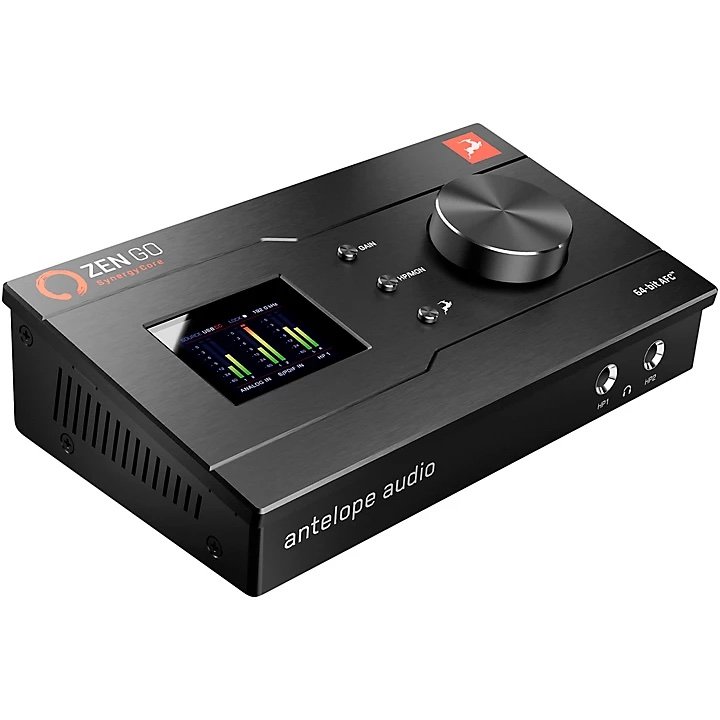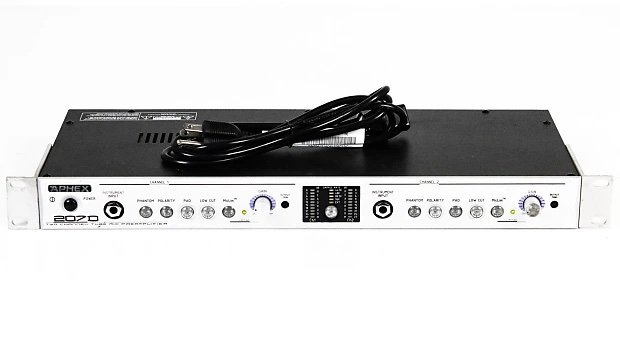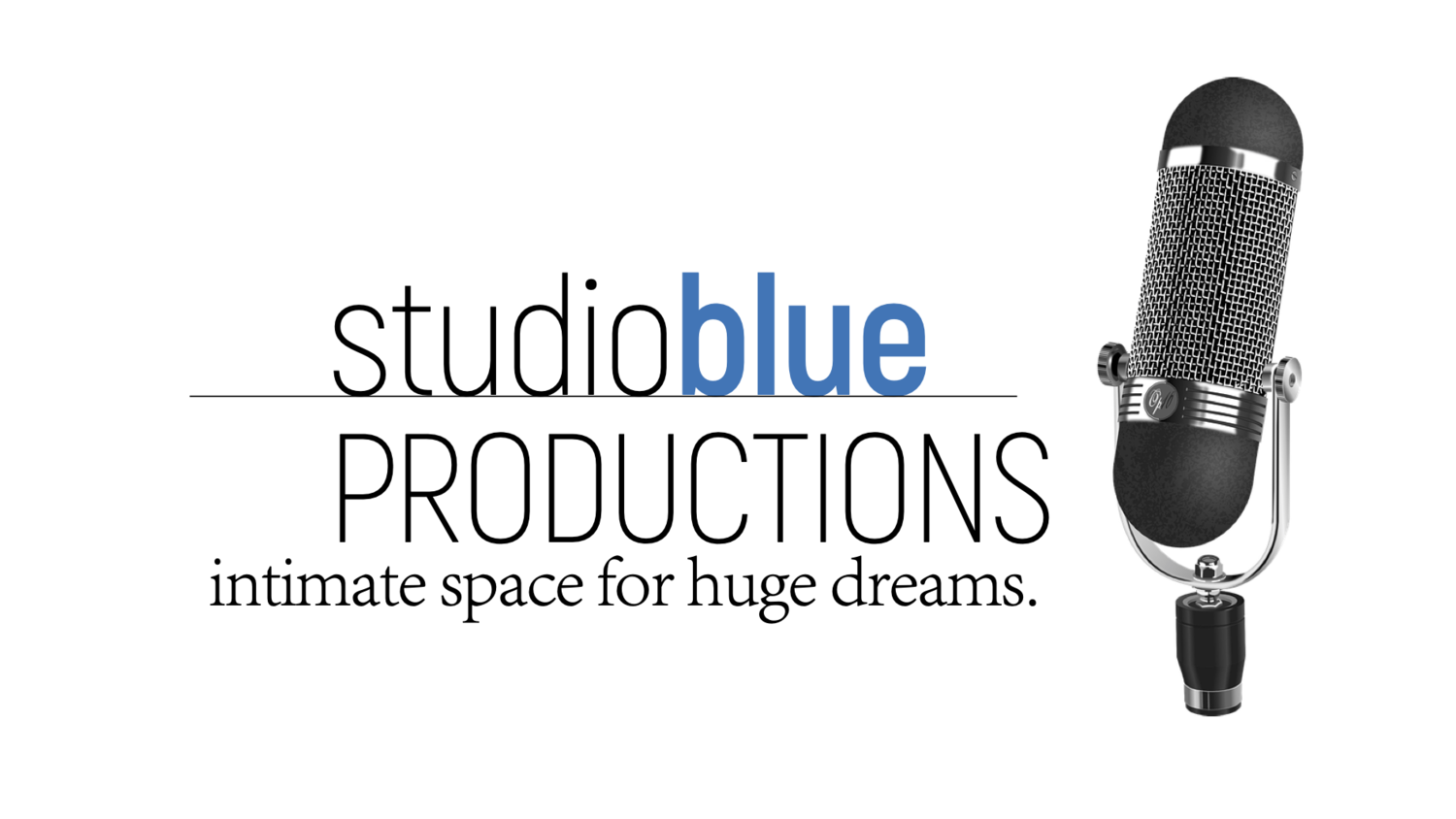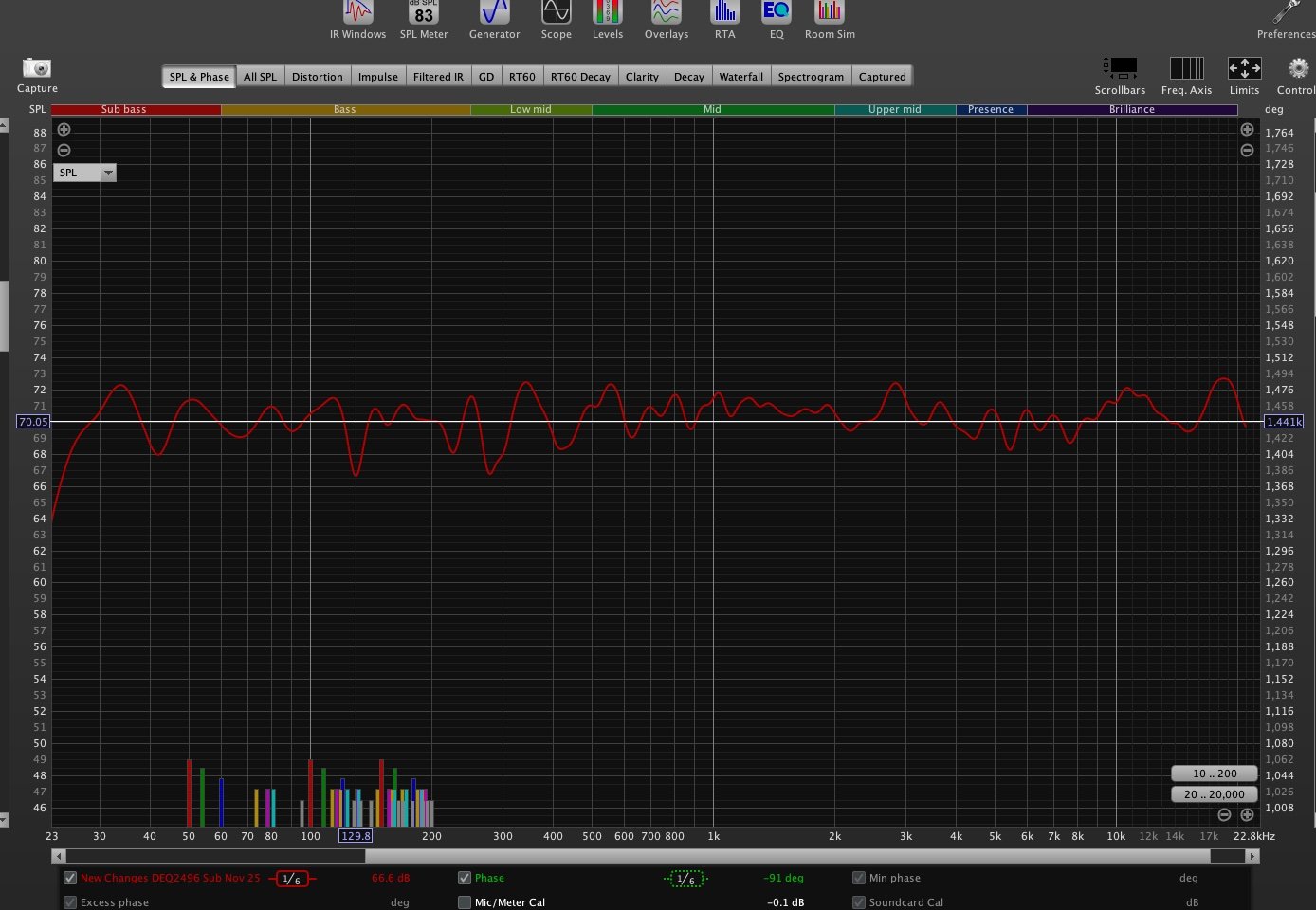GEAR, TREATMENT, WORKFLOW, CAPACITY.
WHAT’S MOST IMPORTANT?
What does it sound like when it’s done? That depends on the talent, the room, the microphones, the outboard gear, the control room tone, the monitors, and the experience of the engineer.
EARS + PERFORMANCE: The engineer’s ears and skills are critical. And then you want terrific performances. Past that …
TRUSTABLE MIX ACOUSTICS: The best start to a great recording space whose configuration and size suits your project, and mixing environment that is well-treated — it has a sound you can trust.
THEN, THE FACILITY. Your production process and intention are critical. Is it a live recording? Then you need a location large enough to support the instrumentation and sound you have in mind. Will it be tracked and heavily overdubbed? You might actually prefer a smaller space.
StudioBlue is a small space, but we can work with you to record and produce at other locations suitable for almost any production design. Any tracking (recording) done elsewhere can be returned to Studio Blue for mixing and — for many genres — mastering.
How many musicians can Studio Blue accommodate?
A tracking studio. Studio Blue is a small studio, with sufficient room to support three to four musicians simultaneously for some genres, but is ideally suited for “tracking”, with two to three musicians at a time. For four musicians, two may be located in our isolation space, and two in our control room, maximum. The control room can accommodate three people comfortably.
Small spoken word productions, too. Our studio is also excellent for spoken word and audio book production.
Small studios can be precise and less risky
Precision. Experienced producers in many genres are comfortable in staging their recordings in a series of tracking sessions where two or three musicians at a time record their parts, after which a rough mix is achieved to support the next set of recorded tracks. This approach works for many genres and is excellent for production and commercial work.
Isolation with communication. For small groups (trios and quartets) especially in jazz, we have a video monitoring system to support clear visual communication between musicians in different rooms.
Find out if we’re right for your project. A key question for picking your next studio: How many people can record at the same time? This number depends on the type of music. Digital piano, bass, and drums for jazz may need less space than a heavy metal trio. If you want clean, isolated tracks, a heavy metal trio needs more isolation and/or a larger space than we provide.
So, in addition to the number of people you want to record simultaneously, you want to consider your genre and the types of instruments at the same time can give you the quality mark you’re looking for.
Overdubs with feeling. Often a great approach with smaller studios — which helps them achieve “big studio” results — is to record the musicians live, and then have the musicians come back to replace their original parts in smaller sub-groups. The original recording captures the arrangement and feel of the track. The replacement tracks can take those performances up a notch through attentive re-recording that nevertheless has the original performances in the headphones of the performances to help maintain the vibe of the live original track.
Such tracking and overdubbing approaches can take more time, but results can be excellent, and the overall cost may possibly be measurably less than using a larger studio with acoustically helpful dimensions. For that, read on!
“Live recording is more “accident-prone” for a few obvious reasons. Your entire song is being captured in a single moment, and fixing mistakes is much harder. You need to be strict about how you organize your recording session and the musicians involved.”
THE STUDIO “SOUND”
Acoustics vs session workability. The vast majority of studio design literature focuses on the acoustic properties of rooms, and in these cases the dominant topic are the wall and ceiling ratios that determine which frequencies build up. The actual size of the room — its volume — is less important to researchers than dimensions.
But these researchers miss out on key advantages advantage of large volume spaces.
In large studios, people can see each other. You can pack more musicians into a big room at one time, allowing visual communication.
A large volume room with the right proportions can add their own character to the sound. The larger the room, the more likely it is to have a workable, even beautiful, room tone that is even with a distinctive and appropriate decay. Many large rooms have a careful selection of woods, fabrics, and movable treatment to help shape the decay and tone for a specific project.
In our small studio, we offer clean sound and good communication. Our small studio gives you separation, good headphone mixes, and video communication if you want. Let’s focus on separation, since medium to small studios won’t have enough size to generate beautiful, natural reverberations.
With tracks recorded cleanly and comfortably, with good audio and visual communication, you can get great performances that feel good, and mixes that can sound world-class by introducing the right flavor of software reverberation. (We offer some of the best reverb software on the market.)
Small studios reduce your costs. It takes a very large recording space (“tracking capacity”) to achieve good separation with loud instruments, or with many instruments — and when you have many loud instruments, you’re talking about a very large (and often very expensive) space to record clear tracks.
In our studio experience, a room for four to six musicians for most commercial genres should have ceilings at least 8 feet tall, with ceilings taller than 10 feet being ideal, and a width of roughly twice (2.2x) the ceiling height and a length roughly three times the ceiling height. (These dimensions are good for a large range of room volumes.) With a ten foot ceiling, your recording room’s volume would be 10 x 22 x 30, or 6,600 cubic feet. A shorter room with an eight foot ceiling would be 8 x 17.6 x 24.5 feet, or about 3,500 cubic feet.
This may translate into a pricey hourly rate when the studio is in urban or near-urban settings, simply because of the cost of real estate. (Portland’s commercial real estate rental price per square foot is around $30, so a big recording room plus a control room alone would cost the studio perhaps $8,000/month to lease — and then they have to charge for labor and other overhead.
Even if you want a big studio, we can help. Don’t be discouraged. We can offer options, no matter your situation. If you need to track a large number of musicians simultaneously, StudioBlue can work with you in other, affiliated and more affordable spaces suitable for up to six to eight simultaneously performing musicians. We can bring our skills, key gear, and microphones to ensure a quality capture that meets your needs.
Or we can help you plan multiple tracking sessions to lay down your songs with us and help you replace your tracks in a way that preserves musicality, captures clean performances, and gives you options you might not get with a single tracking session in a large space.
Your choice.
Gear and ears
All the fanciest gear in the world can’t overcome a room that doesn’t let you create results that sound good because the room is lying to you.
The next step? Great mics properly positioned on great sources (i.e., you).
Then at last you get to deploy your gear (and plug-ins), and how that’s all set up to promote a good workflow.
But, let’s be real. You want to know about the gear.
BEYOND THE SOUND: IT’S TRUSTING WHAT YOU HEAR
You can mix things and master things when you can hear things. Our workflow is designed to produce results for you.
Some bigger studios have tons of “outboard” gear. These hardware units take the signal path (from a mic, a mixing console, or another piece of gear) and alter it so that the engineer can give a project the shape, sound, and quality the client requires.
Mixing largely “in the box” (that is, on a computer without relying on external gear) has been increasingly accepted as another way to get great results — even Grammy(tm)-winning results. Some engineers prefer to mix in the box and even prefer to mix with headphones on.
Whether in the box or out of it, or some hybrid, the project and the engineer need to be well-matched.
For the music and voice work I engineer, almost all of the sound shaping we need can be captured and created on a computer using a digital audio workstation (DAW) — this is called working “in the box”.
Outside of the box, gear can influence the sound — from the mic you pick, to the device that converts the mic’s signals into digital format, and sometimes steps in between — can all impart flavor. Some sax players and trumpet players sound great on ribbon mics. Some singers sound great on a condenser mic whose signal is passed through a tube-based preamplifier.
I have diverse microphones and pre-amps that can be chosen for the situation, which create a special magic that otherwise would be hard to recreate with software. At the same time, many of the software products I engineer through have their own magic.
We can talk gear on the phone — and how to use it get a trustable, industry-standard output. From pre-amps to microphones to in-the-box high-end processing chains, the sky is the limit nowadays.
But we are most excited about the room we record and mix in. When it comes to monitoring and mixing, our well-treated control room competes with almost any room out there.
PRE-AMPS
We tend to record cleanly, not relying too much on coloration from external hardware pre-amplifiers. We do have options, should that be useful.
Antelope Audio Zen Go Synergy Pro is my latest addition to preamp/interface options. Read more about it at the link. I added it because the Antelope Audio products in my studio have solid clocks for high resolution audio, and they come with DSP-based effects that offer superb quality and almost no latency. It can reliably record up to 96kHz with essentially no distortion and flat frequency response. (Julian Krause does a deep dive on its behavior when set to 192kHz, but I never anticipate using that sample rate for recording. It’s unnecessarily high.)
Aphex 207D (3) two-channel digital digital pre (total of 6 inputs) with MicLim and hybrid tube technology (THD <.18%, great for a tube architecture, EIN -129dB, up to 65dB pre-amp gain). While this pre-amp is older, its specs meet or surpass some of the most highly regarded pre-amps available today. (SOS review here.)
Aphex 107 (1) two channel pre — a simpler version of the Aphex 207D, and a sleeper hit for quick, high-quality microphone recording.
TPSII Tube pre with two inputs with upgraded NOS tube (Sylvania long plate). The variable impedance on the TPSII supports an unlimited range of microphone types, from dynamics to ribbons and everything in between. It can also be used as a DI or tube effect in recording or mixing guitars, basses, or other instruments you’ve previously tracked. Tear sheet here for specs.
Midas pre-amps (12 channels, 8 of which are from the Behringer ADA8200 (THD+N is -96dB, or 0.0015%, with total dynamic-range capability of 98dB, and the microphone input EIN figure is -129dB), and 4 of which are from the Behringer UMC404HD (see the link for Julian Krause’s review). The unit has a total dynamic range of 100dB, with the mic input EIN at -129dB. These are both generally well-regarded for clean, quiet tracking and pose no issues for excellent gain for all types of microphones.
In 2025, we are installing an SSL 18 interface which has stellar specifications and a variety of workflow and topology benefits. Stay tuned.




Beyond these, we have more pre-amps that are high quality, with low noise and virtually no coloration (8 additional channels). All tolled, we have 26 inputs, of which 24 are in the digital domain to the computer (an M1 Mac running Logic).
When we need more choice in pre-amp coloration, we have an extensive array of professional plug-ins from Acustica Audio, Plugin Alliance, Waves, and KIT.
These include preamp and console emulations from sometimes vintage and hard-to-find hardware from top manufacturers:
SSL (E, G, J)
Neve
Focusrite
Soundcraft
Studer
Harrison
RCA
EMI
EAR
AMEK
Universal Audio
MICROPHONES
People love to gawk at microphones. The reality is, the sound a mic gives you is a combination of the room, the source (e.g., your voice or guitar), and then the mic. They work together. For example, I have three microphones whose character resembles vintage Neumann microphones (very expensive and well-regarded mics), which sound terrific on most voices, many guitars, jazz drums, saxophones, and jazz bass. But on some voices, they’re just too dark. So I would recommend another, somewhat brighter mic. On loud sources, you may want a super-cardioid pattern to reduce the room tone from reflections, or a mic with a pad that reduces the signal being recorded, allowing you get get excellent signal, low noise, and reduced chances of distorting or otherwise overdriving the microphone.
Or you can record cleanly into our Antelope Audio Axino mic, which has an on-board digital signal processor that emulates 18 different world-renowned microphones. We also have state-of-the-art microphone modeling systems from Acustica Audio, where target mics represent the world’s very best, and which have been carefully captured in anechoic chambers at a variety of distances and polar patterns.
We will find your mic.
Some of our microphones
ROOM and mixing workflow
We use Room EQ Wizard (REW) regularly as we shift furniture and change treatment. We recently added two “super-chunks” which help absorb low-end energy in a studio, so that low notes don’t ring as long. Generally our goal is to have all frequencies down to 45 Hz drop at least 45dB within 250ms. This helps us trust that the room is not tilted to the low end.
When REW shows us results that need to be improved, we deploy DSP in the signal chain to gently modify the monitor outputs. Most adjustments are within 2-3dB, with some adjustments being 5dB. The charts below also show that, through most of the frequency range, the room’s total harmonic distortion (which results from our monitor performance) is below the room’s noise floor. Since our room is very quiet, that means that distortion in the room is essentially inaudible.
The overall results are quite flat using psychoacoustic analysis, with very tame low end.
We are installing a smaller pair of near field monitors, the IK Multimedia iLoud MTMs, which are used by some of the industry’s top engineers for mixing and/or referencing. They are known for very strong time alignment to create remarkable imaging, excellent low-end extension, slightly mid-forward frequency response to speed up fixes during mix down, and built-in room correction digital signal processing using IK’s ARC 3 system, resulting in a sound that accommodates the characteristics of the control room to create a tonal character you can trust.
In final phases of mixing and mastering, we use high-end magnetic planar headphones to double-check our mixes, and run them through highly-regarded control room simulations.
These control room simulations are carefully crafted from great European studios using SIENNA from Acustica Audio, as well as Chris Lord-Alge’s Mix LA, London’s Abbey Road, and Nashville’s Ocean Way control rooms using NX technology from Waves. These simulations sometimes reveal details useful in finalizing a balance or suggesting a tone or processing change (for example, on instrument transients or reverb parameters).
MONITORING
We use several monitoring methods. Great monitors (studio speakers ideally giving you a full and accurate sense of the program material) can be made to fit a room better by adjusting their EQ via room calibration. The REW frequency response graphs above show the benefits of systematic room calibration. But having choices in monitoring is very helpful, and we have that covered, too.
We use near field monitors from Kali, the well-regarded Kali LP-8 version 2 offering, as our main monitors. With room calibration, these monitors provide roughly +/- 2.5dB from flat from 30Hz to 20kHz with our subwoofer, and in most parts of the spectrum, better than that. The low-end is only 3dB down at 27Hz. There are some excursions related in one case to room modes that no monitor could address, and one that we can address, but these are narrow and for most purposes inconsequential when looking at the room psychoacoustically.
We supplement our acoustically treated room with the IK Multimedia ARC STUDIO, which creates certain minor adjustments to further improve our monitoring accuracy. My use of ARC Studio is primarily focused on its ability to simulate the sounds of other monitors and other environments (iPhone, cars, etc.). This allows me to check the ability of a mix to sound right no matter how a consumer listens to the music.
We have recently added IK Multimedia’s well-regarded iLOUD MTMs, which include on-board calibration of their own. Used vertically on the bridge of our desk, these provide excellent, phase-coherent, aligned response from about 45Hz to 24kHz. We acquired these to check accurately for phase and imaging, which these speakers are known for.
We use magnetic planar headphones from Avantone for headphone mixing, as well as other headphones for comparison. Our headphone mixing is largely focusing on hearing your mix in other virtualized environments, courtesy of excellent plug-ins from Waves and Acustica Audio. These companies have used state of the art convolution-based technology to capture the frequency response, phase, and imaging for some of the world’s best control rooms.
Acustica Audio also offers the ability to hear your mix as though you are listening in a car, or one phones or boom boxes. (Waves has modeled Mix LA, Chris Lord-Alge’s famous control room, which also includes a boom box.) Checking mixes in other environments really helps dial in a great mix, revealing issues that don’t appear in a well-treated room with very good monitors.

































